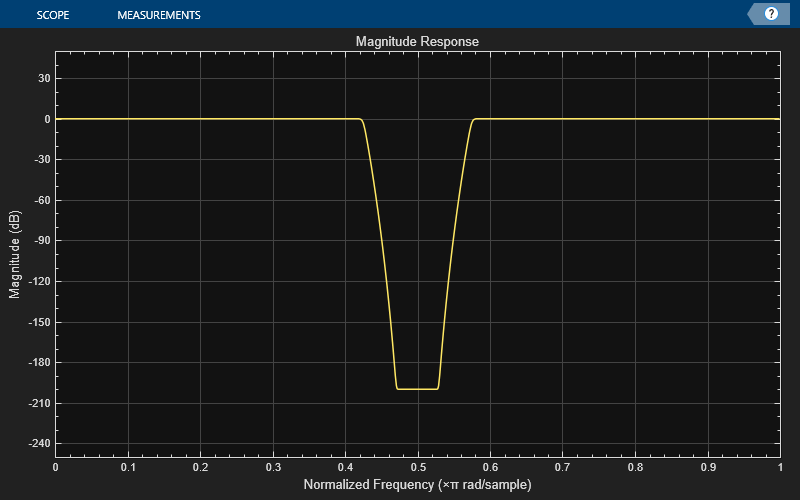designNotchPeakIIR
Design and implement high-order Butterworth notch or peak IIR filter
Since R2023b
Syntax
Description
[
designs a peak IIR filter with the filter order of 2, the center frequency of 0.5 rad/s,
and the quality factor of 2.5.B,A] = designNotchPeakIIR
B and A contain the second-order section
coefficients for the numerator and denominator of the peak IIR filter, respectively. The
arrays B and A have a size of
N-by-3, where N is the number of filter
sections and equals half the filter order.
The System object™ argument is false by default. To implement the filter,
assign the filter coefficients to a dsp.SOSFilter
object.
[
specifies options using one or more name-value arguments.B,A] = designNotchPeakIIR(Name=Value)
For example, [
designs a notch IIR filter with the filter order of 10, the center frequency of 0.55
rad/s, and the 3-dB bandwidth of 0.3.B,A] =
designNotchPeakIIR(Response="notch",FilterOrder=10,CenterFrequency=0.55,Bandwidth=0.3)
When you specify only a partial list of filter parameters, the function designs the filter by setting the other design parameters to their default values.
This function supports code generation under certain conditions. For more information, see Code Generation.
[
also returns scale values when you specify the B,A,SV] = designNotchPeakIIR(Name=Value)HasScaleValues
argument. SV is a vector of 1s when you set the argument to
false and a vector of scale values when you set it to
true.
filtObj = designNotchPeakIIR(Name=Value)dsp.SOSFilter
object.
This syntax applies when you set the SystemObject argument to
true.
Examples
Name-Value Arguments
Output Arguments
References
[1] Orfanidis , SJ. High-Order Digital Parametric Equalizer Design. 2005, pp. 1026–46.
Extended Capabilities
Version History
Introduced in R2023b
See Also
Functions
designLowpassIIR|designHighpassIIR|designBandpassIIR|designBandstopIIR|designHalfbandIIR|outputDelay



